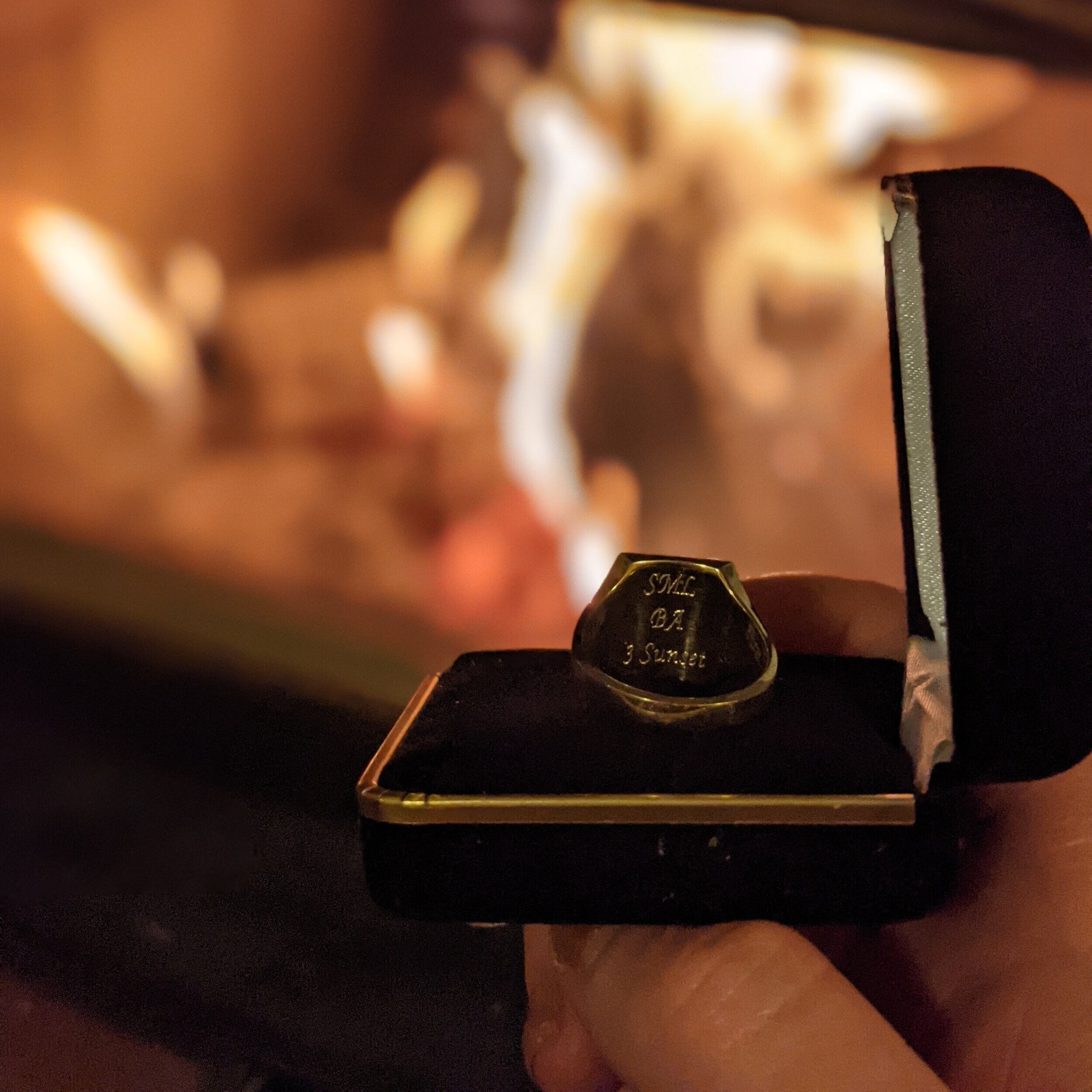What Led to Consolidation
/This article details some of the steps that led to the proposed consolidation of Antigonish. The bill to consolidate the Town and County is currently being debated in Halifax. Last month, close to 300 Antigonish residents met up at a make-shift town hall in Tracadie to voice their frustration towards the process. Liberal party leader Zack Churchill and NDP MLA and municipal affairs critic Kendra Coombs were present. Local Conservative MLAs Michelle Thompson and Greg Morrow were not. All italics in the article are mine unless mentioned otherwise. Special thanks to the people of the Town and County of Antigonish.
The consolidation process has been described by its champions as led by the Town and County of Antigonish with help from the Department of Municipal Affairs (DMAH). As well, they claim that the residents of Antigonish have been sufficiently informed on the matter to the extent that a plebiscite is not required to amalgamate. Reading over internal DMAH communications as well as their communications with Antigonish, it’s evident it was them who created and implemented the consolidation process, as well as instructed the town and county on what to do. The DMAH consistently omitted information they believed would hurt their goal and the amalgamation of Antigonish, and in this aim were not transparent with staff and residents of Antigonish.
On September 29, 2021, Kate Gorman, Marketing Communications Officer for the Town of Antigonish, emailed Ross MacDonald, Municipal Advisor at the DMAH, to follow up on an email from Nick Barr, Director of Governance and Advisory Services. She wrote, “[Barr] referenced- ‘There are many, many reports that support ‘regionalization’ but I won’t bog you down with those for the present purposes. I would actually like to read those reports, I think they would be very helpful for me moving forward through this process.” Gorman followed up on October 6, asking again for these reports to get a better understanding of the pros and cons of consolidation.
MacDonald finally got back to Gorman on October 15, with a list of 12 materials and references, 8 of which were written before the year 2000. He added another document called ‘Reasons to consolidate- the successes,’ which he asked Gorman to share only with staff. Overall, the documents had a lot more ‘pros’ than ‘cons’ regarding consolidation.
On October 18, 2021, Shirley Donovan, Strategic Initiatives Coordinator for the County, emailed Ross MacDonald asking if he could “find out if consolidation with the Town of Antigonish would affect our education contributions?” Ross forwarded that message to Bongsun Cho-Macdonald, Manager of Municipal Finances at the DMAH, at Nick Barr’s suggestion. He didn’t CC Donovan or Kate Gorman. Cho-Macdonald responded, explaining how education contributions work, then said, “Consolidation would impact Education because I assume that the consolidated municipality would have their new tax rates.”
Barr, who was CC’ed by Cho-MacDonald, responded, “Just to be clear, the contribution will not increase as a result of a consolidation, it will simply be based on the combined UA for the new unit. In other words, the education contribution/rate is based solely on the UA and will not be impacted by any change in governance.” In Cho-MacDonald's response, he wrote, “I had that in my draft email but deleted because I didn’t know exactly what she is trying to figure out. Anyway my answer is yes and no because it is going to be impacted because new tax rates will be based on the new council's decision. Does this make sense?” Ross MacDonald responded, “Makes sense to me.”
If you, the reader, are unsure if Education Contributions will rise, because it seems that Cho-MacDonald and Barr are making contradictory statements, that's the point. More on this later. It’s unclear what response Donovan got.
On February 17, 2022, at 3:55 PM Glen Horne, CAO of the Municipality of the County of Antigonish wrote an email titled ‘Subject: Consolidation Update to Nick Barr and Ross Macdonald’: “Good Afternoon DMAH friends... Our website is now active (https://antigonish/) and features our first iteration of FAQs... We are still driving to a council decision in June.” Six minutes later Mark Peck (Associate Deputy Minister at the DMAH), who was CC’ed in the email, forwarded it to Barr, adding that “[Horne] was very supportive of all you are doing for them btw.” Barr, the Director of Governance & Advisory Services at the Nova Scotia Department of Municipal Affairs and Housing, wrote Glen Horne at 4:04: “Thanks Glen! This is great [smiley face emoji with blushing cheeks].” At 4:07 he emailed Peck, “I read through the FAQ’s and some of them aren’t 100% accurate, but I’m going to let it go. Nitpicking won’t do us any good.”
To reiterate, the DMAH is telling the staff at Antigonish that their educational website is great, while privately admitting that the information is wrong. Kat Muth, a third-year Nursing student at StFX, isn’t at all surprised by Barr’s comments, “It feels like they’re trying to keep this whole thing hush-hush, they don’t care what the people here want.”
Muth, who’s lived in the Town of Antigonish since 2021, said she hasn’t received any mail or notices from the town about consolidation. She added that this, coupled with the cloak and dagger techniques used to circumvent the Municipal Government Act (MGA) and deny the people of Antigonish a vote, has caused her to lose trust in the municipal and provincial governments to act in her best interest.
Crucially, Barr didn’t even tell Horne that the website was inaccurate. The DMAH here is not taking the role of a neutral party assisting Antigonish in making an educated decision but curating the information available to Antigonish staff and residents in pursuit of their own goal. In their own words, “Nitpicking won’t do us any good.” The people of Antigonish are not included in that ‘us’, nor is Glen Horne.
On June 21, 2022, the mayor and warden sent a letter to Minister Lohr entitled ‘RE: exploration of the consolidation of the Town and County of Antigonish,’ in which they wrote, “The Province of Nova Scotia is an important partner in this decision and the future of our municipalities and communities. Details and commitments concerning the process of a legislative merger and funding for transition and post transition are crucial to our decision. As our councils approach a decision point we want to take this opportunity share [sic] with you our process to date and discuss these two areas in particular.”
On July 13, 2022, Glen Horne wrote a letter to Mark Peck, entitled ‘Re: Antigonish Consolidation Transition Funding approval.’ Horne wrote, “thank you for arranging and attending our July 6, 2022 meeting with Minister Lohr... Following our discussion with Minister Lohr, I would like to request a meeting with Town CAO Jeff Lawrence and I[sic] to begin to develop a proposal for transition funding in support of consolidation, should the Councils decide in favour. As you know, the province’s support in terms of transition funding is critical to our Council’ decision.” Subsequent emails indicate that Peck and Barr worked with Horne and Lawrence on the funding request in the following weeks. What became of it is missing or redacted in what I was able to access.
In November of 2022, after both councils passed motion towards consolidation, the Minister wrote a response to an inquiry (CORR310M/smh) from a constituent concerned about the process. In the draft letter of this email, he explained that consolidation was a council-led process, and that he “also want[s] to be clear about the financial support that the [DMAH] provided to the County and Town of Antigonish with respect to this process... At this time, the province has not committed to any other funding with respect to consolidation in Antigonish County.”
Antigonish residents have indicated to me that they think it’s highly unlikely that the mayor and warden would have pushed through amalgamation without a promise, explicit or not, from the provincial government that they would be guaranteed funding. This mirrors what Glen Horne said in his letter to the minister.
From a CBC article on February 27, 2024, Lohr says that the province will give money to Antigonish for transition costs, as it has for other municipal mergers. He didn’t say when that decision was made. An unnamed Antigonish resident suggested that on the July 6 meeting the province and Antigonish agreed to an implicit “under the table” non-binding commitment to funding that will be finalized at a later date. This would both reassure Antigonish enough to move forward towards consolidation as well as allow the minister to play fast and loose with the word ‘commitment’ in his letter to constituents. There is no evidence that proves this.
The minister, in the draft letter to the constituent adds, “I would further note that the [MGA] does not require that a plebiscite be held to affect the proposed consolidation.” This is technically true in the most misleading definition of the word ‘true’. The MGA does not require anything at all that could affect the proposed consolidation. Remember, the DMAH lobbied ‘consolidation’ with the express purpose to circumvent the MGA. To mention that the MGA does not require a plebiscite for consolidation but omit the fact that the consolidation process occurs outside of the MGA in a response to a constituent is intentionally deceiving. It would be like your waiter telling you that all their chicken eggs are free range but neglecting to say that your omelet’s made from duck egg. And the duck who laid it is chained to a cage in the basement. The DMAH and Communications Nova Scotia refused to provide me with the final version of this letter.
While it’s unclear if the letter was edited before being sent out, it was written by a government official who was fully aware of the context deliberately being excluded in response to inquiries from a citizen of Nova Scotia about our democratic processes. This line, “The [MGA] does not require that a plebiscite be held to affect the proposed consolidation” was parroted in a Communications Nova Scotia ‘Issues Summary’ from March 9, 2023, without any other context.
On October 10, 2021, Nick Barr emailed Stephen Ong, Director of Contracts and Special Projects at Justice Financial Advisory Services, regarding the town’s policing contract. In brief, the town and county have RCMP contracts that have a 70/30 cost share with the province. There was concern in the DMAH that a consolidated Antigonish would have their share rise to 90/10, paying significantly more money for the exact same service, like what happened to Windsor-West Hants. In this email Barr responded to Ong’s suggestion that it could be possible that a consolidated Antigonish keep its 70/30 split. This would be done by doing away with a regional municipality, and having the town join the county. This is the current plan for consolidation. Barr wrote, “When we went through the [Windsor-West Hants] consolidation, I didn’t understand this was an option.”
About 10 minutes later, he forwarded the email chain to Mark Peck and Ross MacDonald, explaining, “On Thursday I told Glen that DoJ would get back to us this week but I'm not going to send him this information until the three of us have had the opportunity to discuss the matter first... Glen asked me what would happen if it turned out that consolidation would lead to an increased policing costs, and I told him that we’d have to discuss the matter internally to see if there was a willingness to provide some additional financing to mitigate such costs. Sorry for dropping the bad news on Thanksgiving.”
The next day Ong answered some of Barr’s questions on the specifics of the PPSA (Provincial Police Service Agreement) and the MPSA (Municipal Police Service Agreement). Barr followed up with even more questions, including a clarification of how the definition of a municipality in clause 1.1(a) (rr) excludes rural municipalities under Chapter 295 of the Revised Statues of Nova Scotia 1989, the Municipal Act, and section 7 of the MGA from subsection 10.3, among others. To Barr’s credit, this is actually pretty complicated stuff.
Barr ended his email by asking for an in-person meeting with Ong, saying, “This is our #1 priority so we’ll work around your schedule.” Ong’s response stressed that Public Safety Canada (PSC) would have to agree to any course of action and based on what happened in Windsor-West Hants, it seems unlikely; “Thus, both the Town and County should be aware of the risk.”
On October 12, 2021, Donna Jewers, Public Safety and Policing Consultant, who’d been CC’ed in all the previous emails, noted, “The best practice that we learned from Windsor-West Hants is to have PSC involved with discussions from the beginning... if Windsor/WH did not “consolidate” and change their name then the 70/30 split would probably have been allowed to continue, as it was a result of the name change that PSC determined it was a ‘new’ entity that impacted the 90/10 cost-share ratio. Due to that reference, it resulted in a $1.5 million increase in policing for the same service.”
Putting aside “consolidate” in air quotes, this is outstanding. These emails demonstrate that consolidation cost Windsor-West Hants 1.5 MILLION DOLLARS for exactly what they had before. Windsor West Hant’s Operating Budget for 2023/24 is $31.1 million dollars, they’re paying $5.5M for policing. Under a 70/30 split the exact same level of policing would cost $4.2M, meaning the Regional Municipality of West Hants loses over a million dollars every year because Nick Barr and the rest of the DMAH didn’t know any better. They rushed through an extremely complicated process without nearly enough due diligence and the people who suffer are the taxpayers of Windsor-West Hants.
If the people of Windsor-West Hants look around their community and try to imagine how a million dollars every year could be put to work to benefit the community and wonder how the hell was that allowed to happen? Why didn’t I get a vote on this? What other hidden costs did consolidation bring? They aren’t alone. Unfortunately, the residents of Antigonish may soon be asking those same questions.
From a CBC article in 2021 on the aftermath of consolidation, West Hants staff said expenses rose by $2 million “due to the Mandated Education Contributions and the Royal Canadian Mounted Police contract” (Remember the Education Contributions Nick Barr said won’t rise as a result of consolidation in Antigonish?). ‘Efficiencies’ saved West Hants $500,000 on the operating budget, which, for all of you business majors, is actually a lot less than $2 million. The ‘Best Practice’ the DMAH learned in West Hants cost taxpayers $1.5 million dollars a year. Who knows how much the “Best Practice” they learn in Antigonish will cost?
Public knowledge of the work our elected--and especially our unelected--government does is crucial to a functioning democracy. Not knowing what our government does hurts us. To quote Nick Barr one more time, from an email to Ross MacDonald and Glen Horne on September 8, 2021, “We certainly don’t want anyone to be left with the impression that we’re hiding anything from the public.” What’s the public’s impression?
The DMAH and Communications Nova Scotia were contacted for a quote for this story. They declined an interview and ignored most of my questions. All the emails I got were from copies of records under the FOIPOP Act (Freedom of Information and Protection of Privacy Act), of which only one of the copies is available online.
Department of Municipal Affairs and Housing phone number: 902-424-6642. The person who answers your calls has nothing to do with the proposed amalgamation of Antigonish, but they can connect you with someone who does.































